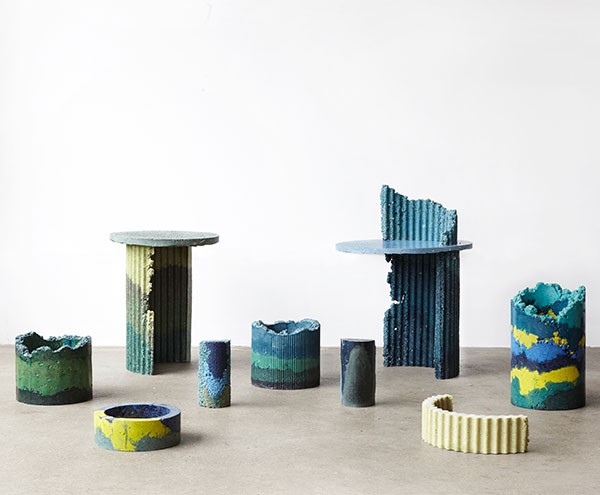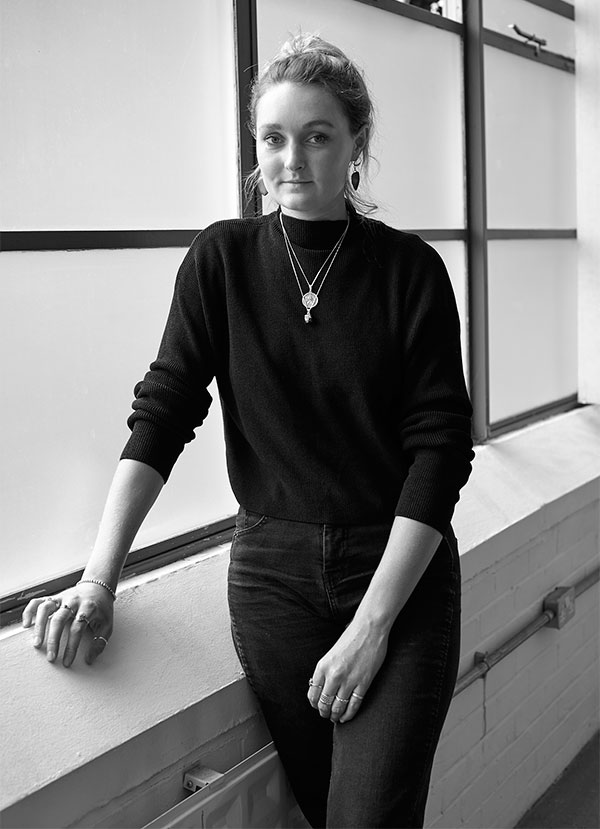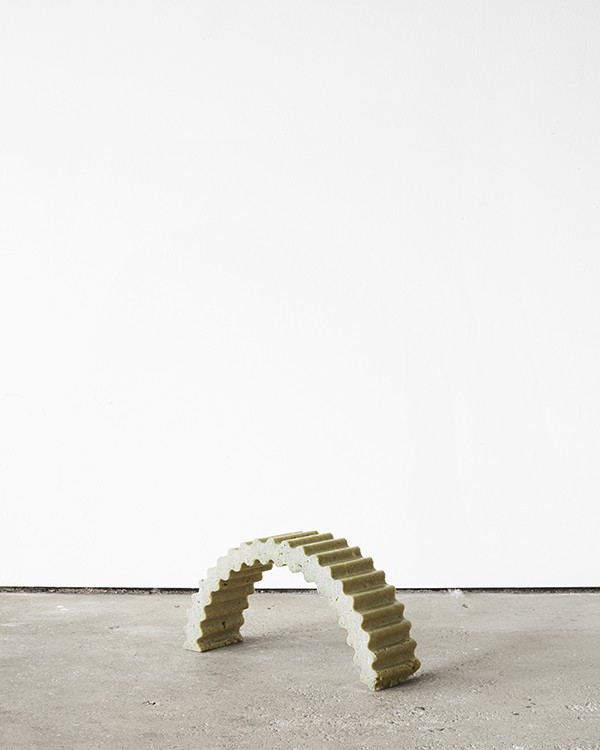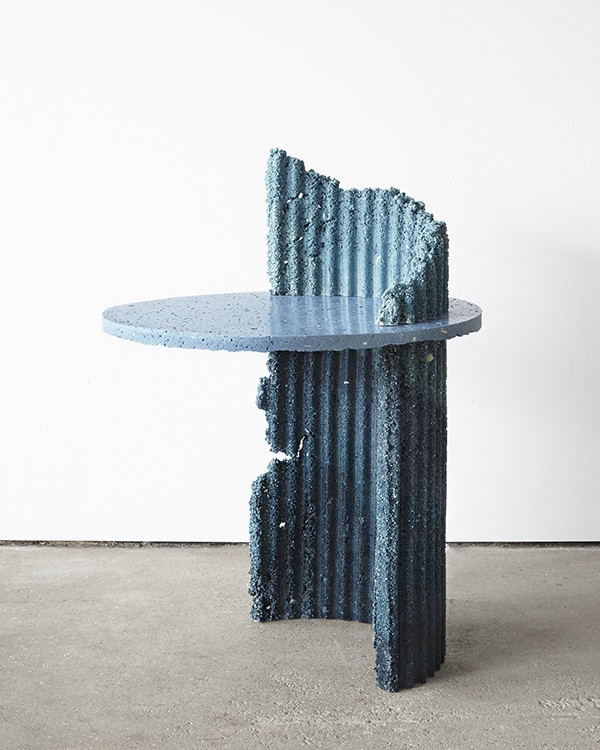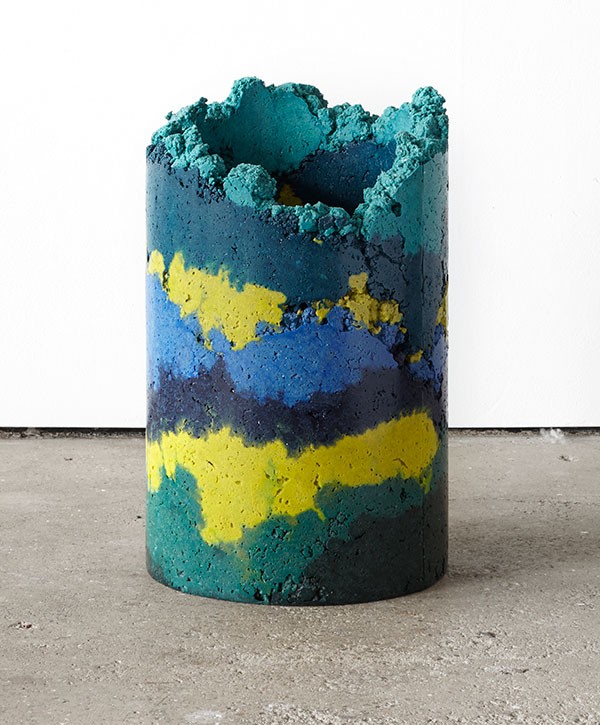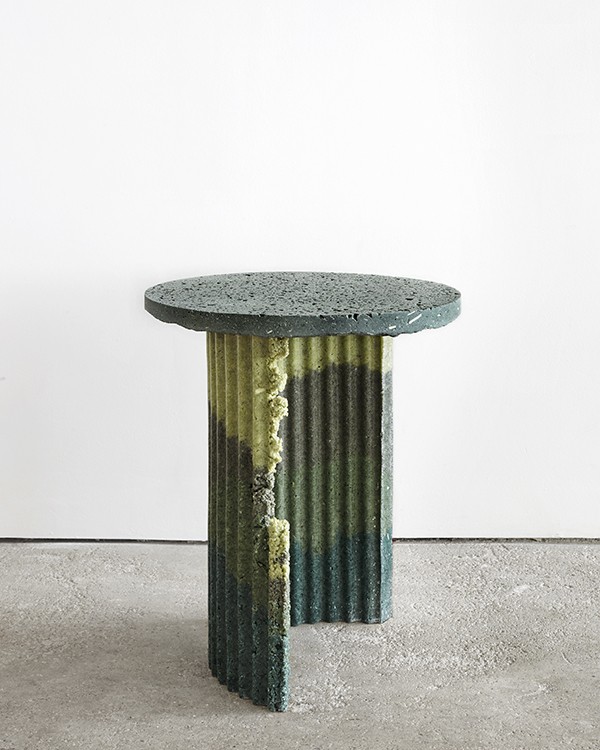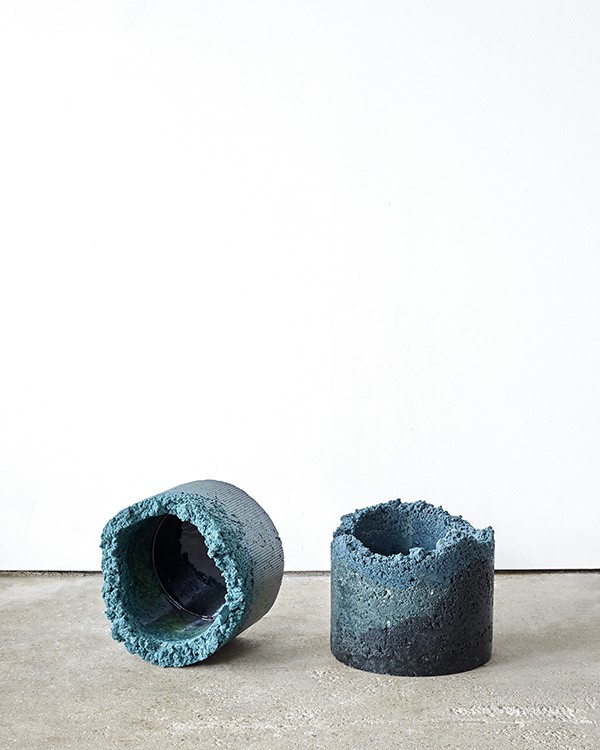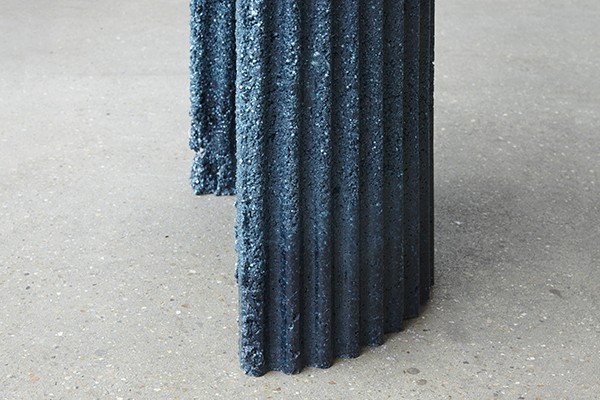Material designer Charlotte Kidger showcased her work at the London Design Festival last year. With plastic named as the Material of the Year, her collection of furniture is made from recycled industrial waste – polyurethane foam dust, which is a byproduct of 3D model making. She also created the collection using moulds made from found objects.
After completing a BA in Printed Textiles and Surface Pattern Design at Leeds College of Art, she spent two years working in industry at a textiles mill in Lake Como, Italy. She then moved to London and began freelancing as a CMF (Colours, Material, Finish) designer. In 2016, she went on to do an MA in Material Futures at Central Saint Martins, which provided the perfect balance for a material-based research led practice.
Here, she tells us how the discovery of this untapped material led to her collection of recycled plastic furniture and decorative objects that have a unique artisanal aesthetic.
How did experimenting with industrial waste come about?
It began with a curiosity into how I could transform general everyday waste plastic into a new material through alternative processing methods. I shifted from looking at everyday plastics and decided to focus on industrial waste streams, as I hoped for scalability and more unexpected material inputs.
I began visiting different industrial estates in the UK to see what by-products existed and to gather general research as to where this waste went and if there was any infrastructure in place to utilise it. It was surprising to find out a lot of companies hadn’t even thought about where their waste was going, once it was of no value to them it was out of sight out of mind.
I have a strong interest in materiality and experimental making, so I immediately imagined the waste products as secondary raw materials. At the time of my research this way of thinking and viewing industrial waste materials was already underway by many designers. It was a movement that caught my attention and something I wanted to be a part of.
What exactly is the by-product used in your work and how did you discover it?
It consists mostly of polyurethane foam dust. Polyurethane foam is in the same category as expanded polystyrene, which most people will be more familiar with. I came across the material whilst in the wood workshops at Central Saint Martins. It was mainly used by product designers and architecture students for the fabrication of 3D prototypes or models.
Once the bulk of the material was used, there would be off-cuts and shavings that would just be thrown into mixed waste bins. I concluded that if the material and the by-product existed on a small scale within educational facilities, then it must exist on a larger scale within industry.
Where did you source the waste polyurethane foam dust from?
After lots of research I discovered the largest source of the material was used by CNC companies, specifically those that specialised in 3D model making. After visiting a few companies I found one in particular that was open minded and willing to let me into their factory. I soon discovered the large amount of dust that was generated during the milling process.
The dust is collected through a ventilation system and then disposed of with a waste company. The owner of the company was very keen and slightly curious as to what I could actually do with the material. He allowed me to take a large bag of it to experiment with. I soon realised the material had lots of potential and I could potentially – in the long run, find a permanent solution to how the material could be utilised.
What can you tell us about the process used to transform this material into a new product?
The raw material input is the polyurethane foam dust. It is the consistency of the dust that makes the end material what it is. I use a resin that acts as an adhesive combined with a pigment and the dust to create a composite material that has the right consistency to be cast with.
So far all my pieces have been cast from self built moulds made from found artefacts including old pipes and corrugated sheet material found within industrial estates. The material is cold-cast meaning there is no chemical breakdown involved, within 12-24 hours the mould can be taken apart and the material has fully formed to create an extremely durable product.
What kind of pieces have you created from this material so far?
So far, I have created both sculptural and functional pieces. Each piece has a balance between form and function and can be perceived by the viewer as pieces of art or functional products.
The first 3D pieces to come from the material were the vessels. I wanted a form that was minimal and highlighted the material’s characteristics. The tube shaped vessels were made from moulds taken from scrap pipes.
The form allows the strength and beauty of the material to be seen from the smooth shiny outer finishes to the rough more organic exposed edges. The tables followed shortly after and intended to show more functionality to the material.
Where do you find inspiration for the designs?
The current designs were inspired by the industrial environments where the materials were sourced. It was important that the material remained the main focus. Casting each piece from the same mould yet realising natural defects would occur during the casting process, means each piece is slight unique.
The broken edges on the tables, where the material looks as if it is crumbling away, was unintentional and only realised once the mould was taken apart. The defects that occur during each cast then inspire the next design.
What other applications do you think the material could be used for?
Its versatility means it can be used for decorative purposes as well as functional. I have a lot of interest in the material being used for more residential, functional settings as well as one-off bespoke designs. The advantage of it being durable and aesthetically pleasing means it lends itself to a broad range of applications.
So far I have had interest in the material being used for retail spaces as panelling and props for visual merchandising. It has the potential to be used for panelling systems due to its durability and bespoke options for colouring with pigments. I’ve also had interest for smaller, more everyday products.
Given the material can be cast into any shape or size there is huge scope as to what it can be applied to. I’m in the middle of creating sheet and block material for people to then CNC new products from. This is a more commercial side to the material and one that needs further development as the more functional requirements means more testing.
I am keen to develop more sculptural pieces as opposed to commercial panels/sheets etc, as the material has many characteristics to be pushed and developed aesthetically.
What are some of the most interesting collaborations you have you worked on, to date?
The commission I did for Woolmark for their International Prize Trophy for the 2018 semi-final design. This was the first time I downscaled the material after making the larger tables for my degree show. This was an interesting challenge as I hadn’t experienced trying to control the material to create multiples of the same piece before.
Although the trophies were cast from the same mould each piece was unique due the layering of the colours and the formation on the edges. It was a good opportunity to use the material to create something that would be valued and kept as a sculptural piece as well as an award to mark an achievement.
What projects are you working on next?
I have lots of projects that I’m in early stages of working on. Unfortunately these can’t be discussed until they are finished but they involve testing with new forms of dust to create sheet materials that can then be milled from and a large bespoke commission for a retail space. I’ve also just found out that I made it through to the finalist selection process for WORTH Partnership Project. I am working with a cement tile manufacturing company from Budapest to develop a new material/product with my material and cement tile manufacturing processes.
This is early days but if we win it will be a very exciting year of developments! I’m taking things slowly as it’s important to make the right decisions as to who I work with and what I make. I want each piece to have a true meaning and function so that it is valued.
See more at charlottekidger.com

